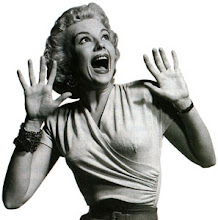The Battle of Algiers (Gillo Pontecorvo, 1966)
“How to win a battle against terrorism and lose the war of ideas. Children shoot soldiers at point-blank range. Women plant bombs in cafes. Soon the entire Arab population builds to a mad fervor. Sound familiar? The French have a plan. It succeeds tactically, but fails strategically. To understand why, come to a rare showing of this film.” A section taken from a flier inviting guests to a Pentagon screening of the film in 2003
Italian filmmaker Gillo Pontecorvo was approached by a former Algerian Guerilla fighter, Salah Baazi in 1964 to make a film about Algeria’s struggle for independence. Filmed on location and using a predominately non-professional cast, the film follows the FLN’s (National Liberation Front) struggle against the colonial French, seen through the eyes of new FLN recruit, Ali la Pointe (Brahim Haggiag). The French army paratroopers are lead by the pragmatic commander Col. Mathieu (Jean Martin, the only professional actor).
The film used a news reel and doco aesthetic to depict the loss of life, bombing, torture and assassinations, illustrating the high stakes of urban guerrilla warfare and the ruthless tactics both sides engaged in from 1954-1962. The Battle of Algiers was banned for five years after its release in France, and when it was eventually screened in 1971 there were bomb threats.
Hailed as one of the greatest political films of all time- The Battle of Algiers has been a favourite of left-wing groups for years. Supposedly used as an instruction manual for groups like The Black Panthers and the IRA, at the same time the film has also been used by people at the opposite end of the political spectrum for training in counterinsurgency.
In 2003 The Battle of Algiers was plucked out of film history obscurity as word got out that the film was being screened at the Pentagon. The film was used as indication of the resistance that American forces would face in Iraq and as an example of how a large force could win a miltary battle, but still ultimately lose the moral war. Sadly no-one at the screenings seemed to have paid much attention to the lessons from the film.
The Thin Blue Line (Errol Morris, 1988)
“Our criminal justice system, on paper, is the best in the world… but we’re human, and so we make mistakes. If you execute and execute and execute, at some point you will execute an innocent man.” Randall Dale Adams, Texas Monthly, Sept 2001
Few films can boast that they helped right a wrong, shone a light on institutional failings and redefined the way documentary investigation would look and feel forever- The Thin Blue Line did all these things.
On the evening of 28th November 1976 Dallas policeman Robert W Woods was shot and killed during a traffic stop. After an extensive search for his killer, 28 year old Randall Dale Adams, who maintained his innocence, was arrested, tried and sentence to death. Years later documentary-maker Errol Morris would meet Adams whilst doing some preliminary research into another topic. Struck by Adams’ story Morris started looking into the case ultimately changing his documentary topic.
What resulted was not only a deft blow to the procedures of law and its pre-existing prejudices, but a seminal piece of documentary filmmaking. With its use of multi-narrative reconstructions, detailed interviews with all the participants – from investigating officers to prosecution witnesses, coupled with its noir aesthetic and Philip Glass’ eerie soundtrack, The Thin Blue Line has become a staple of young documentarians’ education.
This documentary was released in 1988, in 1989 Adams was brought before the Texas Court of Criminal Appeals, where the D.A. declined to prosecute the case again. Adams was freed after 12 years in jail, some of that time spent on death row. Morris’ film directly impacted on Adams’ freedom- his investigation included a confession from the real gunman- who had gone on to commit multiple crimes.

